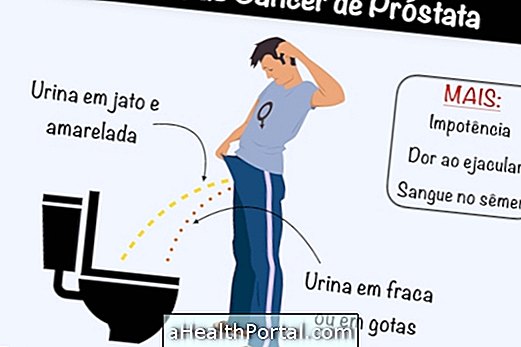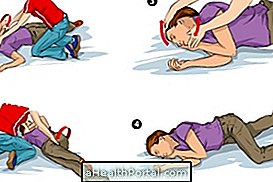During a moment of dizziness or vertigo, what you should do is keep your eyes open and stare at a point in front of you. Focusing on a specific point in front of you is an excellent strategy to combat dizziness or vertigo in a few minutes.
However, those who suffer from dizziness or vertigo should be given treatment, which can be done with remedies indicated by the neurologist, and physiotherapy sessions, as well as daily exercises that can be performed at home.
These exercises and techniques can be indicated in case of dizziness, vertigo, labyrinthitis, meniere syndrome or benign paroxysmal vertigo and bring rapid relief of symptoms.

Home treatment to combat dizziness or vertigo
Great examples of exercises that can be performed at home, every day, in a quiet moment are those of ocular persecution, as for example:
1. Sitting with the head in motion: Hold an object with one hand and position it in front of you with your arm stretched out. Then you should open your arm to the side, and follow the movement with your eyes and head. Repeat 10 times only to one side and then repeat the exercise to the other side.
2. Sitting with the head in motion: Holding an object with one hand and positioning it in front of you with your arm stretched out. Then move the object up and down for 10 times. The secret is to look at the object all the time
3. Sitting with head stopped and eyes moving: Move your arm to the side and keep your head still and follow the object only with your eyes.
4. Sitting with head stopped and eyes moving: Stretch the arm forward and stand looking at the object. Then bring the object close to your eyes, up to 1 hand span, always looking at the object as it approaches and moves away.
Check out these and other tips in the following video:

Technique to combat dizziness or vertigo
There are also some techniques that can be performed by the physiotherapist to reposition the calcium crystals inside the inner ear, which contribute to relieving dizziness or vertigo, and the feeling of malaise in a few minutes.
The Apley maneuver, which is one of the most used, consists of:
- The person should lie on their belly upwards and with their head out of bed, making an extension of approximately 45º and holding for 30 seconds;
- Rotate head sideways and hold position for another 30 seconds;
- The person should turn the body to the same side where the head is positioned and remain for 30 seconds;
- Then the person should relax the body of the bed, but keep the head turned for another 30 seconds;
- Finally the person can turn his head forward, and remain standing with eyes open for a few more seconds.
This maneuver must be performed for the side affected by the disease, and when the person has both sides affected, he should repeat all steps to the other side.
This maneuver should not be performed in case of cervical disc hernia, for example. And it is not recommended to do these movements alone, because the movement of the head should be performed passively, that is, by another person. Ideally, this treatment should be done by a professional such as physiotherapist or speech therapist, because these 2 professionals are qualified to perform this type of treatment.
Remedies for dizziness or vertigo
The neurologist or otorhinolaryngologist may indicate taking medication for vertigo according to your cause. In case of labyrinthitis you may need to take Flunarizine Hydrochloride, Crystalline or Meclizine Hydrochloride; in case of Menière Syndrome can be indicated the use of medicines that diminish vertigo, like Dimenhydrate, Betaístina or Hydrochlorothiazide. When the cause is only benign paroxysmal vertigo, medication is not necessary.

























